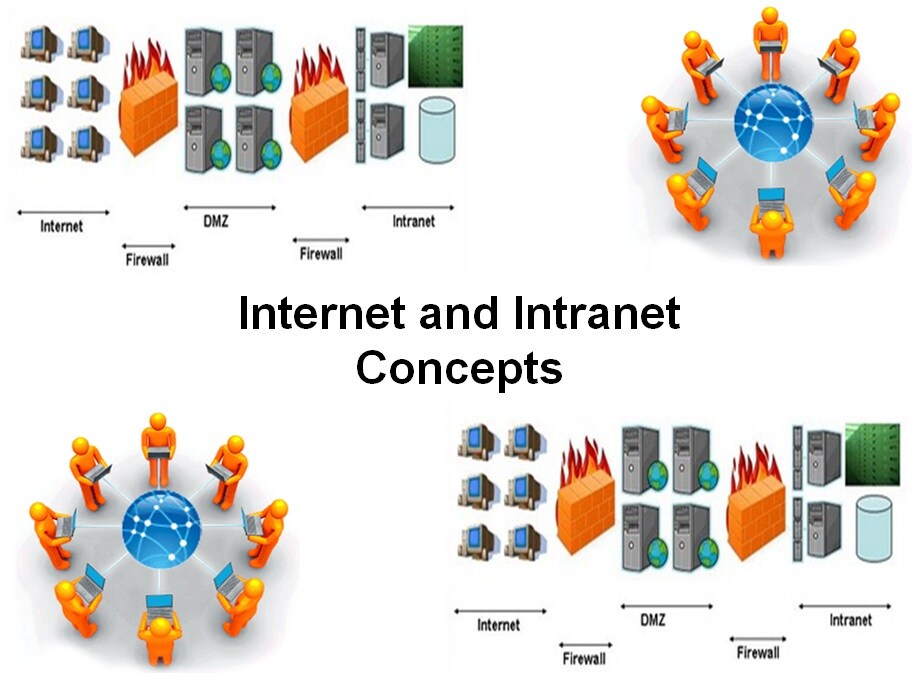-
Learning by doing
-
Trainers with practical experience
-
Classroom training
-
Detailed course material
-
Clear content description
-
Tailormade content possible
-
Training that proceeds
-
Small groups
In the course Internet and Intranet Concepts the main technologies and protocols that play a role in the modern Internet and Intranets are discussed. The origins of the Internet can be traced back to ARPANET, a military network built in 1969 in the United States. The internet is now a global phenomenon, which has acquired the character of a mass medium. The basic technology based on the Internet Protocol (IP) is still in effect.
The course starts with a discussion of the network protocols that form the basis of the Internet such as IP (Internet Protocol), TCP (Transmission Control Protocol), FTP for file transfer, SMTP for email, DNS and DHCP.
Next attention is paid to how Web Servers work and how the HTTP protocol regulates the communication between a Web Server and a browser. HTTP requests, HTTP responses and HTTP headers are covered as well as the latest faster HTTP/2 protocol.
Also the role of the markup language HTML with which web pages are created in combination with CSS (Cascading Stylesheets) is explained. The structured data formats XML and JSON, which play an important role in the exchange of data, are also treated.
Internet Security is also on the program of the course. This mainly concerns protecting activities and transactions that are carried out online. Authentication, various forms of encryption, SSL connections and the recognition of specific threats such as SQL Injection, Cross Site Scripting and Cross Site Request Forgery are discussed.
Furthermore the two main forms of Web Services are covered. Both Web Services that work with the SOAP protocol and Web Services that are based on REST are on the schedule of the course.
Finally attention is paid to client side scripting with JavaScript and server side scripting with Java, PHP or NodeJS. And the implementation of modern Single Page Applications based on Ajax technology is discussed as well.
The course Internet and Intranet Concepts is designed for those who wish to learn about the background and operation of the Internet and Intranet.
To join this course is no specific skills or knowledge is required.
The concepts are treated with the help presentation slides. A demo Web site is used to clarify the concepts. Attention is also paid to hands-on exercises. The course material is in English. The course times are from 9.30 up and to 16.30.
Participants receive an official certificate Internet and Intranet Concepts after successful completion of the course.

Module 1 : Internet Protocols |
Module 2 : HTTP Web Servers |
Module 3 : HTML and CSS |
| Basic Web Concepts Protocols and OSI Model Requests For Comment IP Protocol IP4 versus IP6 TCP and UDP Domain Name System (DNS) File Transfer Protocol (FTP) Email with SMTP POP versus IMAP DHCP Protocol |
HTTP Protocol Web Servers and Browsers Uniform Resource Locators (URL's) HTTP Request and Responses Request and Response Headers HTTP Status Codes MIME Types HTTP/2 SPDY-protocol Multiplexing Server Push |
HTML Markup Language HTML Page Structure Elements and Attributes Links, Tables and Images Forms and Input Elements Form Submission Styling HTML with CSS CSS Stylesheets CSS Selectors CSS Box Model CSS Layout |
Module 4 : JSON and XML |
Module 5 : Internet Security |
Module 6 : SOAP and REST Services |
|
Structured Data XML Standard XML Elements XML Attributes XML Vocabulaires XML Schema and XSLT JSON Format JSON Objects JSON Arrays Encoding JSON Decoding JSON |
HTTP Basic Authentication HTTP Digest Authentication Symmetric Encryption Asymmetric Encryption Hash Encryption Secure Sockets Layer Secure HTTP (HTTPS) Digital Certificates SQL Injection Cross Site Scripting Cross Site Request Forgery |
SOAP Services XML Transport SOAP Message Structure SOAP Headers WSDL REST Services URL Patterns Standard Methods GET and POST PUT and DELETE REST Clients |
Module 7 : Client Side JavaScript |
Module 8 : Server Side Scripting |
Module 9 : Ajax |
|
Client Side Scripting JavaScript Syntax ECMA Standards Variables and Data Types Arrays and Functions Classes and Objects Event Handler Validation in JavaScript JavaScript Frameworks Angular, React and Vue |
Server Languages Java Servlets and JSP's PHP Scripts $_POST Super Global $_GET Super Global NodeJS and npm Package Management Node's Event Loop Session ID's Session Tracking |
Single Page Applications Asynchronous Calls Partial Page Updates DOM API Element Access XMLHttp Request Object Fetch API Callback Functions Promises Error Handling |
